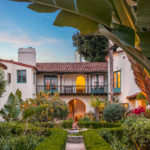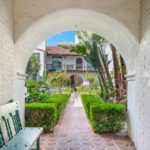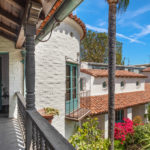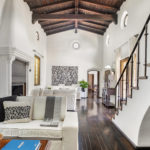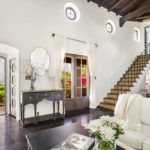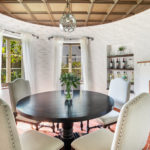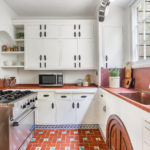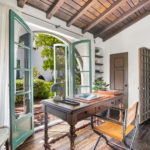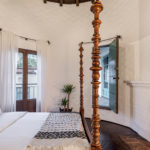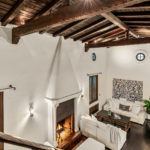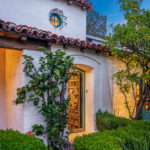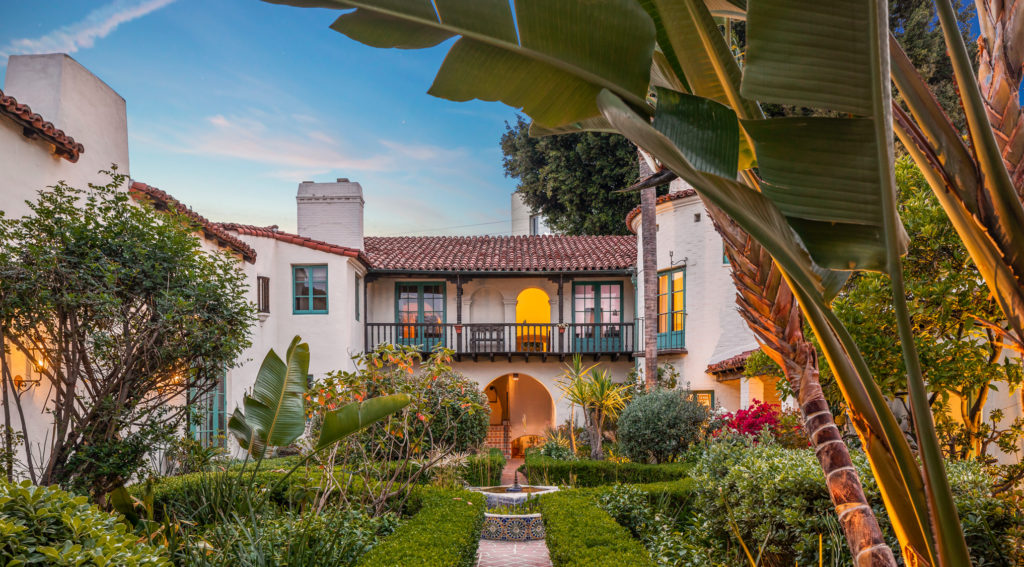Spectacular Townhouse At The Andalusia, $2.6M
Author:Philip Ferrato
Los Angeles is a town of many layers– an archaeology of historicist design running from Mayan to Streamline Moderne with everything in between– packed into a few decades under a hot sun. Some of the most evocative buildings in Los Angeles are the Spanish Revival courtyard apartment complexes designed and built by Arthur and Nina Zwebell in the 1920s, among them their iconic c.1926 Andalusia.
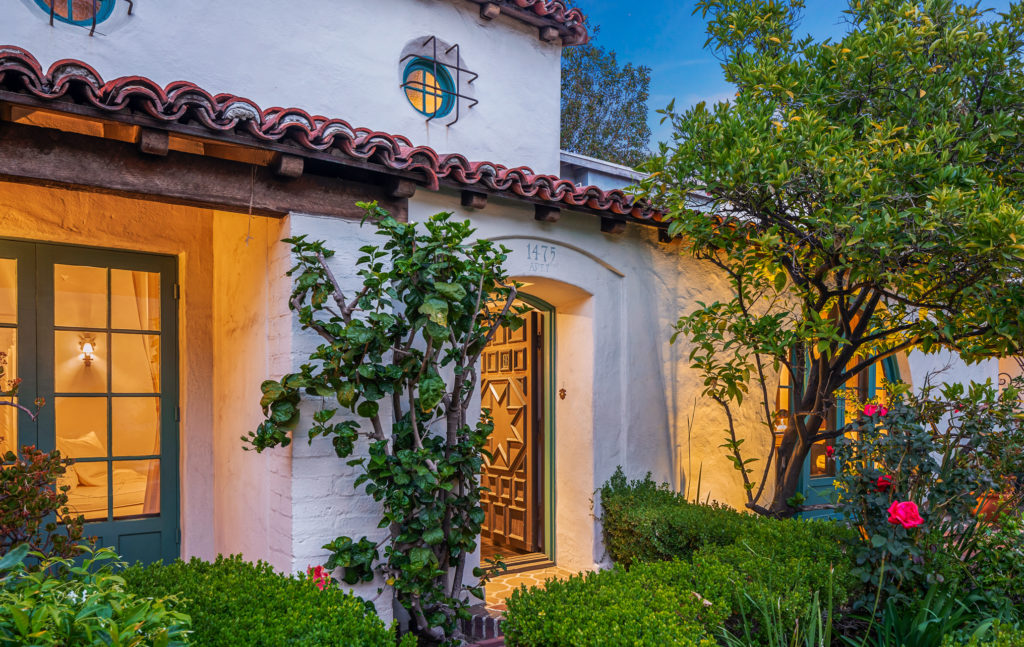
Initially developed as rentals (most are now condos) each of the individual apartments in the Zwebell complexes were not only unique but also leased furnished and decorated by Nina. These perfect, ready-made pieds-a-terre proved to be catnip for Hollywood’s newly-minted silent film stars in the ‘20s, either as short term housing or romantic hideaways, but this stunning two-level unit in the Andalusia was the Zwebell’s own home. Much beloved, the entire 8-unt Andalusia has been diligently restored and maintained over the past two decades with great attention to detail. Above, the entrance to the Zwebell unit and below, the principal bedroom in the rotunda.
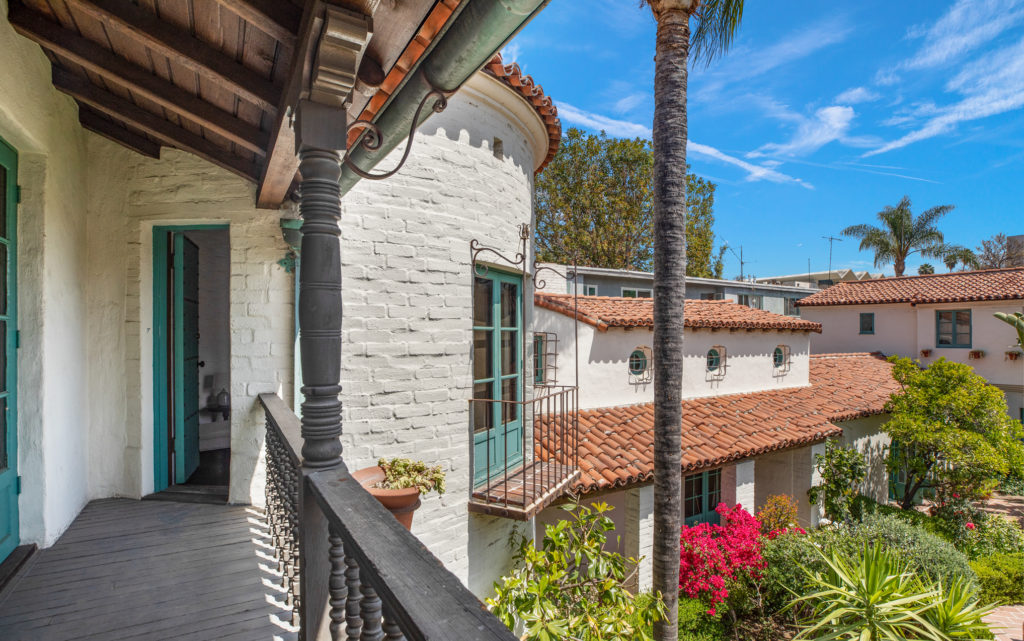
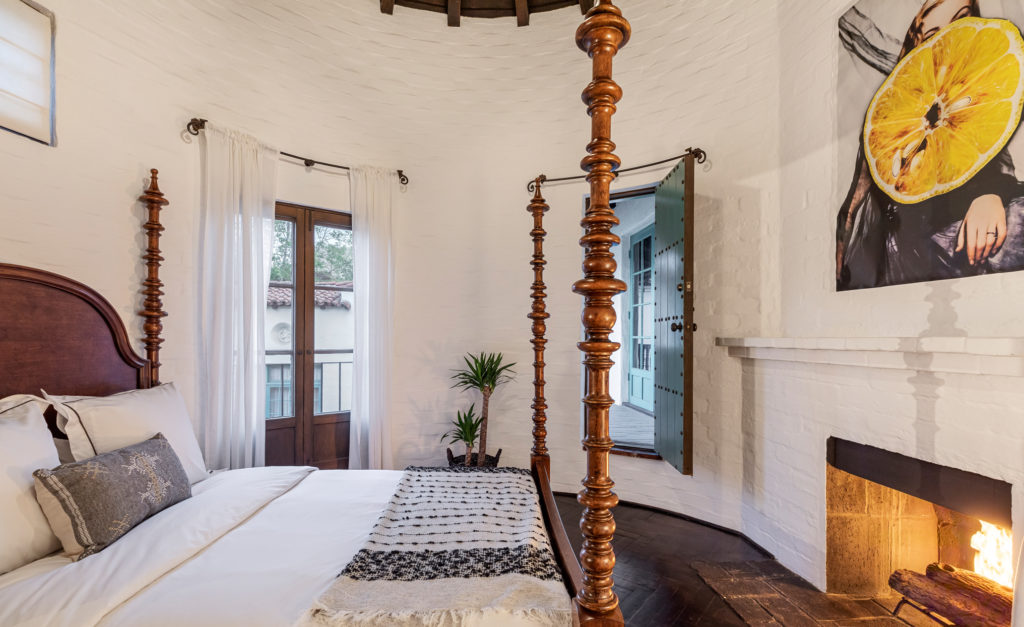
The 1920s were an extraordinary time in Los Angeles. The economy was booming, the film industry had taken off, and it was a good time to be a developer as cold-weather exiles poured in for jobs and year-round sunshine. It was also a good time to be a craftsman or craftswoman– the masons, blacksmiths, carpenters, and decorators with skills that could move with ease from film sets to the historicist residential homes that were popping up all over town– ranging from modest stucco bungalows and Storybook Style cottages to grand Spanish Style or Georgian mansions– and the interior decor that went with them.
The Zwebells had relocated to Los Angeles in 1921 from the Midwest. Neither was an architect (Arthur had sold his interest in a successful auto coachwork business in Illinois he operated with his brothers) but between 1922 and 1927, the Zwebells conjured up a number of multiple dwelling projects in Hollywood, romantic settings all clearly influenced by the Santa Barbara architect George Washington Smith, whose Andalusian Village style was an evocative mix of stuccoed villages inflected with Moorish details, tile and ironwork.
Smith had pioneered the use of hollow terracotta tiles, a kind of sturdy dimensional block that was being inexpensively produced in California’s Central Valley along with the better known floor and roof tiles. The blocks were not only sturdy but lightweight and could be massed to imitate the stone volumes of Spanish buildings, and easily cut so that plumbing, gas and electric lines could be channeled through them. Designed to be covered in stucco, hollow tile structures went up quickly; the thick walls and stucco were naturally cooling in the Southern California heat, and had the added advantages of being fireproof. Their ease of use fueled the 1920s building boom. Given credit for their innovative courtyard concept, most of the Zwebell’s projects have been landmarked.
The Zwebell’s extraordinary double height living room is baronial but austere, and one of LA’s great interior spaces of the 1920s.
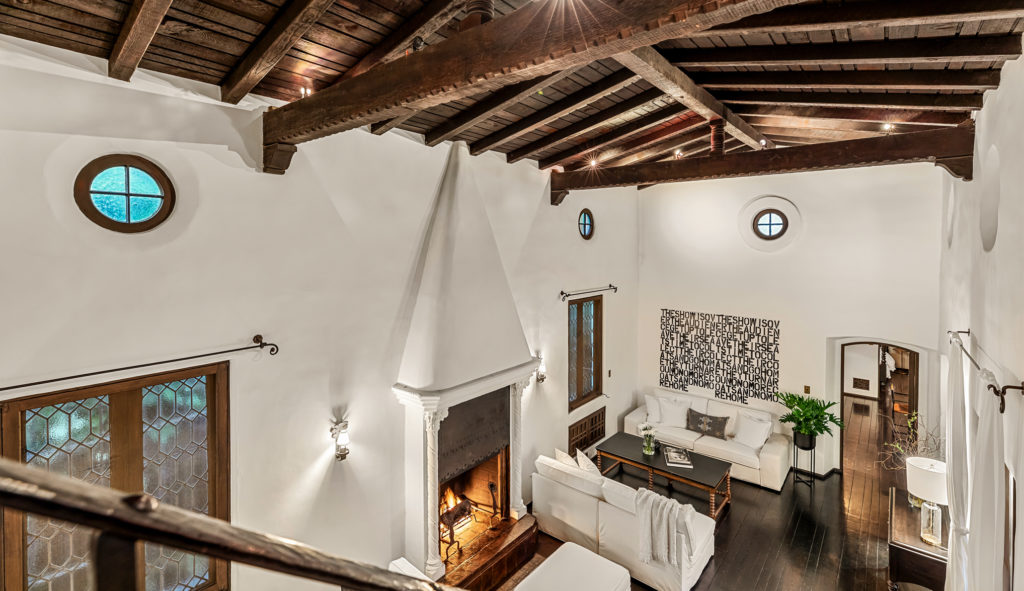
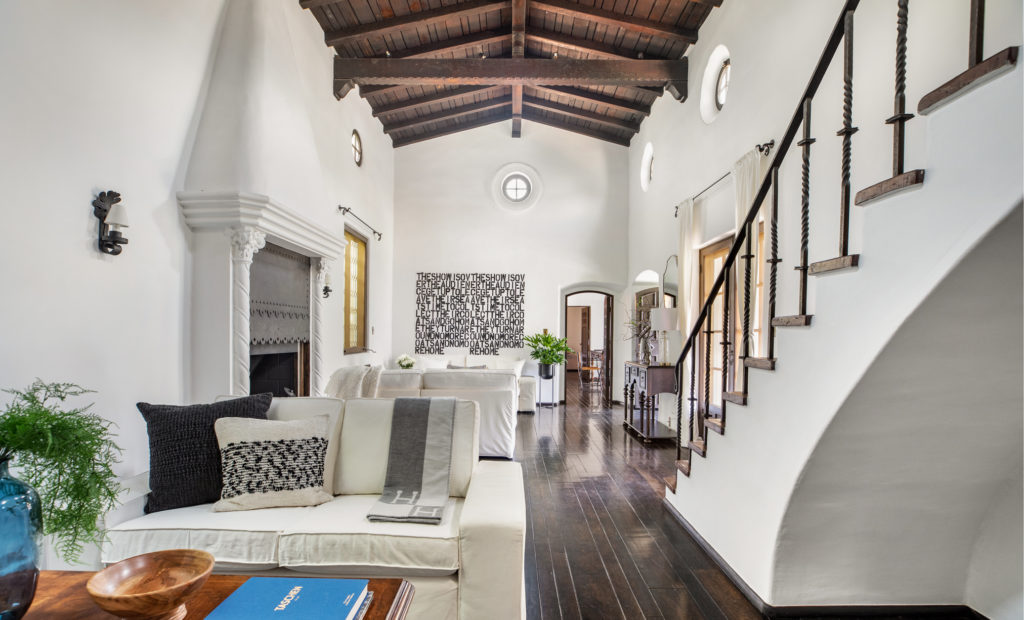
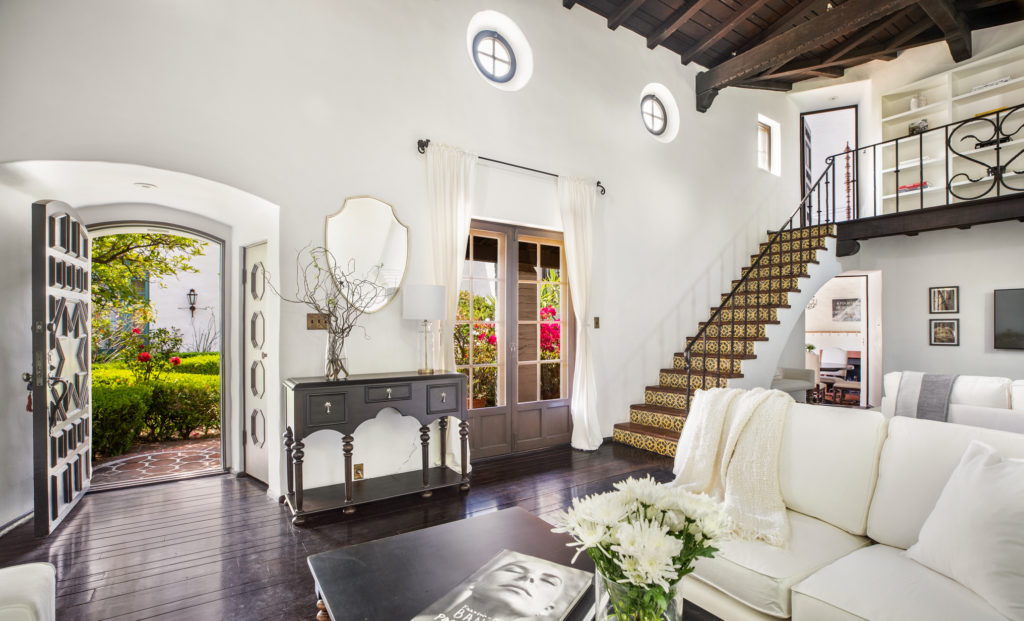
Just beyond, there’s a guest bedroom suite and study.
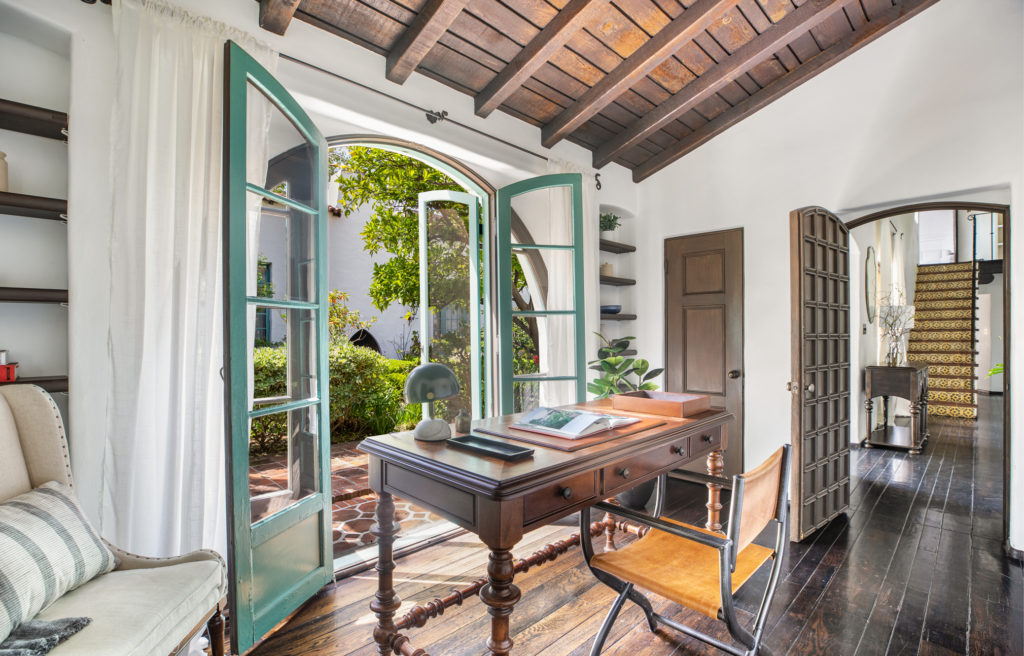
The dining room is on the lower level of the tower, adjacent to the beautifully restored kitchen.
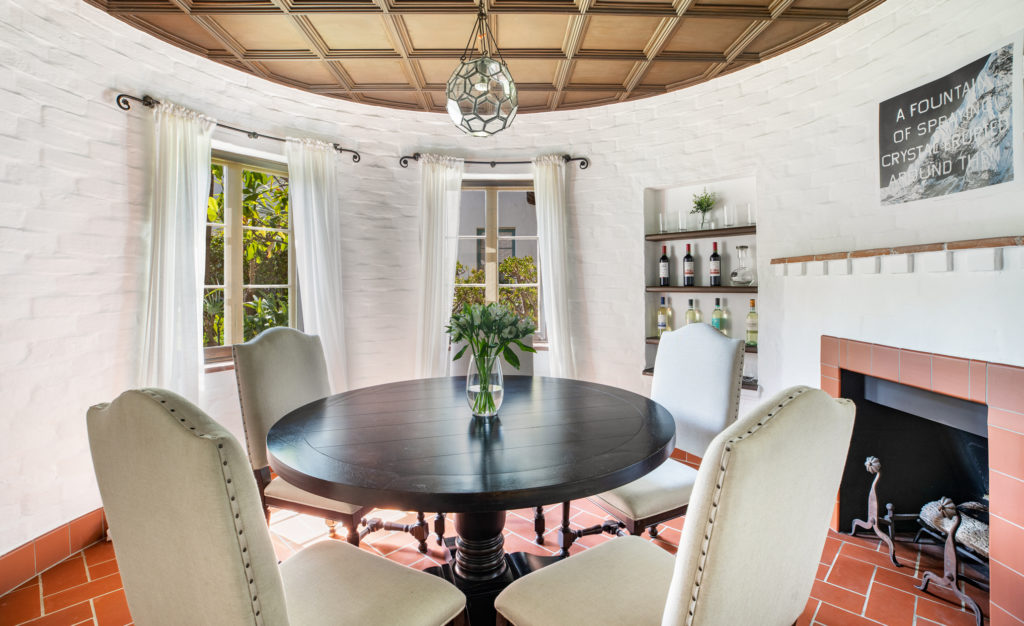
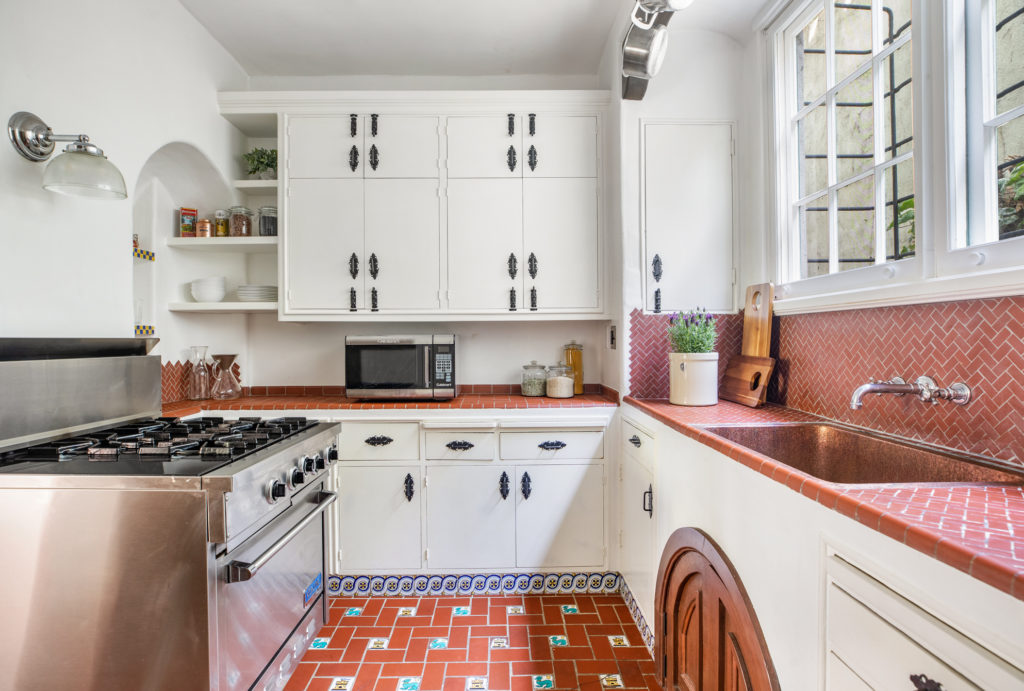
More: Go to the property’s listing for additional information, including a video, a virtual tour, images and floor plans. An exceptional opportunity to own a significant, historic property in perfect condition, represented by Allen Roth at Sotheby’s International Realty Beverly Hills.
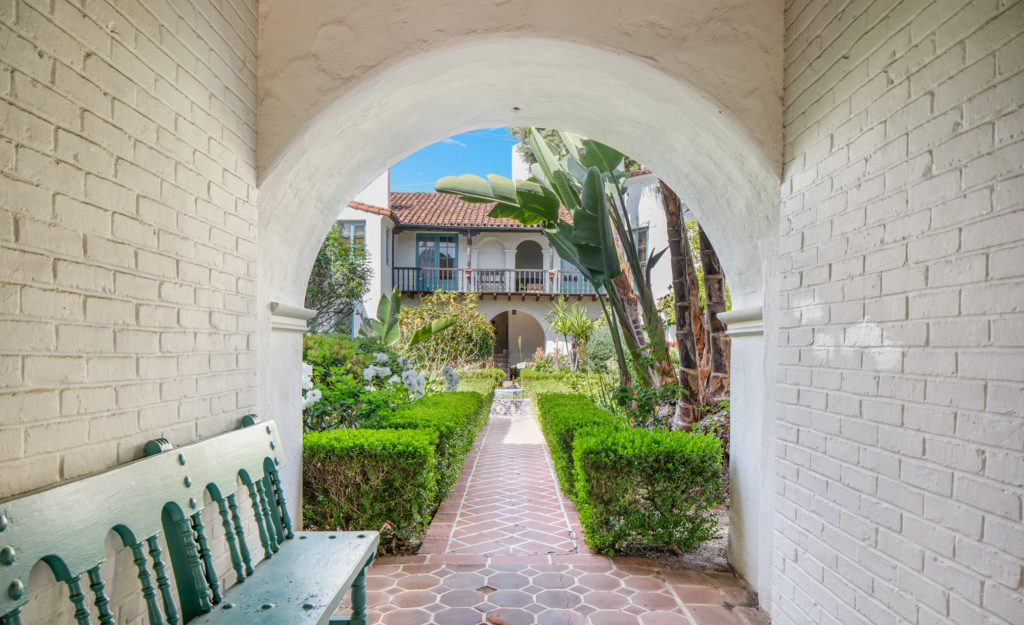
Photo Credit: Barcelo Photography for Sotheby’s International Realty
